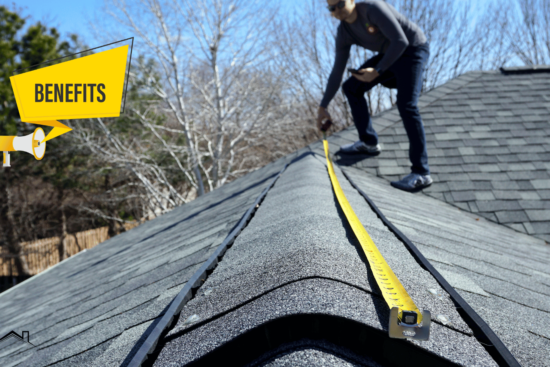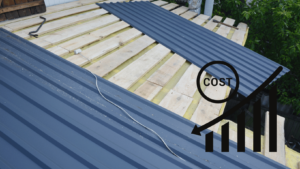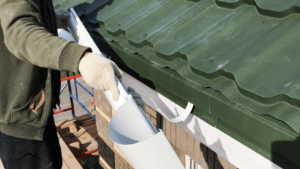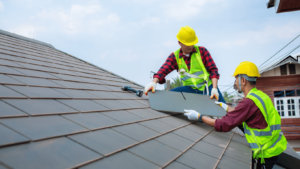© All Rights Reserved | Roof Replacement and Repair - Zaman Roofing LLC. | Website Design & CT SEO Powered by High Point SEO CT
- Google Rating5.0Based on 33 reviewsZaman Roofing - CT Roofing Contractors & Roof Repair5.0Sergey Y."Zaman Roofing” recently completed a roof replacement project in our condo complex, and we are extremely satisfied with their service. From start to finish, their team demonstrated professionalism, efficiency, and exceptional craftsmanship. They were prompt in their communication, providing detailed explanations and answering all our questions. The crew arrived on time, worked diligently, and completed the project within the estimated timeframe.Not only did Zaman Roofing exhibit outstanding technical skills, but they also ensured minimal disruption to our daily activities. They took great care to protect our property, cleaning up thoroughly each day and leaving no trace of debris behind.The quality of the new roof is outstanding. Zaman Roofing used top-grade materials and paid attention to every detail, resulting in a sturdy and visually appealing finished product. The roof has significantly enhanced the overall appearance of our condo complex.We would highly recommend Zaman Roofing to anyone in need of roofing services. Their professionalism, expertise, and attention to customer satisfaction make them a reliable choice for roof replacements. We are grateful for their excellent work and would not hesitate to hire them again in the future.Christopher Z.Zaman Roofing was AWESOME!!!! This is my third time doing a roof in CT on my third home and Zaman did an outstanding job on my rather unique roof line. They even replaced a skylight. I needed a Roof Contract in place before insurance would allow the purchase because the seller was a DeeBag. Zaman worked with my realtor, banker, etc and even waited patiently while the seller delayed the process by 4 months. The week I closed, Zaman Roofing was up and at em. Stripping, prepping and replacing. In and Out. Property was nice and clean after the work was complete. I would highly recommend.Steve TZaman Roofing, located in Berlin, CT, truly excels in providing top-notch roofing services. I am absolutely thrilled to give them a well-deserved 5-star review for their outstanding work. They have proven themselves as experts in roofing Berlin CT, and I couldn't be happier with the results.When it comes to roofing in Berlin, Zaman Roofing stands out from the competition. Their team of skilled professionals demonstrated exceptional attention to detail during the installation of my new roof. They meticulously handled every aspect of the project, ensuring both aesthetics and durability were top-notch.What impressed me the most was Zaman Roofing's commitment to customer satisfaction. From my initial contact with them, they were responsive, courteous, and eager to understand my specific roofing needs in Berlin. Their exceptional customer service throughout the entire process made me feel valued as a client.Zaman Roofing's expertise in roofing Berlin is truly commendable. They have an extensive portfolio of successful projects throughout Berlin, CT, showcasing their skill and knowledge in a variety of roofing styles and materials. Regardless of the complexity of the job, they have the necessary resources to deliver exceptional results.I cannot emphasize enough how satisfied I am with Zaman Roofing's services in Berlin, CT. Their professionalism, reliability, and dedication to their craft are unparalleled. If you're searching for exceptional roofing services in Berlin CT, Zaman Roofing is the company to choose. They will exceed your expectations in every way.In conclusion, Zaman Roofing unquestionably deserves a stellar 5-star rating for their exemplary roofing services in Berlin, CT. Their expertise in roofing Berlin and roofing Berlin CT shines through in their exceptional workmanship and customer service. I highly recommend Zaman Roofing for all your roofing needs.Gary G.Zaman replaced the roof on my 2,200 sq. ft. colonial in 2015. The workmanship was perfect. Unfortunately, over time, the top-of-the line shingles discolored. He was totally supportive in getting the manufacturer to replace them at no cost to me. He just replaced the roof with the new shingles. It was another perfect job. It was completed in one day. The crew was great and they cleaned the area spotless.Chris DWe used Zaman Roofing for our Roof and Gutter Replacement, I acquired 5 quotes for the work and found Zaman to be the most reasonable, it was a Good Decision to choose Zaman Roofing, Seweryn was Professional in every aspect and the Clean-up was nothing short of Amazing, I would Highly Recommend using Zaman RoofingRobert D.Excellent Service and Value - great crew and easy to deal with - highly recommended !Sunghoon P.Great work and reasonable price. I am so happy with their service. I asked a bunch of questions before and after the service and his responses were very prompt and straight to the point. Highly recommend.Adrienne M.I am so pleased that I used this company. My new roof looks fantastic. Such a hard working crew. Seweryn was informative and professional. Price was very completive. Don't hesitate to use them you will be very satisfied. Highly recommend!Nancy M.Good communication, timely response and knowledgeable. Very happy with our experience and highly recommend this company.Beata M.We used Zaman for our roof replacement recently and are very pleased. They replaced our roof in one day and gave us a very competitive quote. Good quality of work. Highly recommended.Lori K.They were here when they said they would. Professional & left everything neat ,cleaned up everything. They were in & out in a day & a half. Would recommend Zaman roifing.Dan R.A+ service, professional and quick response time.Anna G.Zaman and his crew provide great workmanship they installed new roofs they take great pride in the work they do. They were punctual and did a amazing job with the roof installation and clean up. Highly recommend Zaman Roofing to family and friends. Thank you for the opportunity to work with such a amazing contractorScott M.Awesome contractor, I would highly recommend him to family & friends. Seweryn & his crew were here on time & worked diligently. They were the happiest workers I've ever dealt with (I am a former construction project manager with the Federal government). Any & all questions were answered. My neighbors couldn't believe they finished the job in one day & complimented how great the new roof looks.Clement D.Great roofing contractors. I love to recommend it to my friends and family.Karen 9.With the quality, price, timeliness, all round nice guy and great crew, Zaman Roofing LLC is what other companies aspire to be.... Clean, helpful and a pleasure to recommend....james C.Excellent experience from start to finish, all appointments and work times met in a timely fashion, workmanship and clean up left nothing to be desired.Would be a definite recommendation, very pleased.Margaret B.I had obtained multiple quotes and did my due diligence research and Seweryn Zaman came back with fair price and good recommendations. He was professional, explained everything that he was going to do and never once he rushed me during decision process. He showed up on time with his hard working crew and finished my roof in one day. I was amazed with his crew who worked like busy bees. Very impressed with the clean up process and the end product. Two months after he finished my roof he was still helping me deal with the insurance company making sure I had everything I needed. Thank you SewerynSteve B.Very professional and easy to work. The crew came in, replaced my roof and then cleaned up everything! Highly recommended.Jim O.Competitive quote among four others. Seweryn Zaman provided larger color samples of the shingle colors we were interested in. He obtained the building permit, showed up on the day expected with his entire crew. Our older roof was on 24" trusses and needed more plywood replaced than anticipated. He got the additional sheets replaced on the day of the re-roofing. The crew worked with him late until the job was done and picked up every piece of old debris. The roof passed final town inspection with no concerns. Zaman Roofing is easy to deal with; he's responsive on text messages and phone calls. I used them in the past for an emergency repair and he found a well-hidden leak from the builder.Dale C.The crews did a good job, and the leader of the crew did a great job when they replaced the roof of my house in Farming on 7/6&7 this year. When they worked on the project, they worked professionally and in detail. We are very pleased with the work they have done, and highly recommend people to have the company worked on their roof projects.Forrest B.Zaman's was very professional, excellent quality of work and very responsive to our needs. This roofing experience was excellent from start to finish and provided an excellent value. Would certainly recommend them to any friend.Yonatan M.We used Zaman Roofing to replace our roof in 2019 and could not be happier with the service and product. A highly professional company and great personal interaction with the owner. The workers took great care of our landscaping, and the owner was there frequently to supervise the work and take care of finishing touches like flashing the chimney. We have had zero issues since then and highly recommend this company.Quinn V.Zaman was awesome. He was communicative, on-time, and was able to give me a quick inspection of our roof despite the rain. I rarely have a contractor tell me that I didn't need to spend any money, but Zaman told me my roof was fine for the next several years.magdalena K.We recently used Zaman Roofing to replace our 26-year-old roof. Right from the start they were great! Sevy was extremely professional and knowledgeable and gave us a great quote. Everything was done as they described and the final project looked great. The owner was on the job from start to finish as he promised.Ariadna G.Our experience with Zaman Roofing was excellent. I was very impressed with both their work and their customer service. Seweryn was very knowledgeable and professional.Larry G.What a wonderful business. Very responsive. They showed up exactly when expected, completed the project quickly and accurately and left no trace after clean up. All with a very competitive price. I would highly recommend Zaman to anyone looking to have roofing work done.STEVE R.I was very pleased with the roof and gutter repairs performed by Zaman Roofing on two of my buildings. Good workmanship and fair prices, I would recommend and use again.Danielle D.These guys stripped and reshuffled my roof is 1 day! They did an awesome job. Roof is beautiful. He uses a dump trailer which is great and they cleaned up well. Very happy with the work. Also pricing was fair.

What Are the Major Advantages of Single-Ply Roofing?
Category: Roofing • July 4, 2024
Single-ply roofing has gained popularity as one of the best roofing types for commercial and industrial applications in the past few decades. Unlike composed or reinvented bitumen roofs, the single-ply roofing system relies only on one waterproofing membrane material layer instead of multiple layers. This non-complicated and light structure has the benefits of installation, set-up time, and speed.
Lower Installation Costs
The single-ply membrane has a prominent advantage in that it not only lowers labor costs and time required for application compared to multi-ply systems but also enhances the membrane’s durability. Single-ply roofing can be fully adhered, meaning it is fastened using adhesives; mechanically fastened, meaning it is secured using mechanical devices; or ballasted, which means it is anchored using stone or pavers. Since there is only one layer being put down, this process is easy and needs less heavy machinery. This leads to less expensive first and second roofing costs or a lower total cost.
Lightweight
Owing to ease of installation, single-ply membranes are usually light. This results in a lighter weight than the multi-ply builds, as it helps to minimize the structural load on the roof deck and the overall building. It also reduces the requirement for additional roof deck reinforcement to deal with extra load.
Fewer Seams
With single-ply roofing, the membrane material has fewer seams compared to that of the other systems and also exposes seams that could be weak linkages prone to water penetration. Moisture penetration on the roof deck will likely cause deterioration, such as leaks, mold formation, and roof failure. Reducing the number of seams also helps improve waterproofing and may also help prolong the roof’s useful life.
Enhanced Durability
Modern single-ply formulations like TPO and PVC materials offer great thickness, flexibility, and tear strength. This way, the membranes are capable of expanding and shrinking with temperature variations, foot traffic, and other loads while remaining water tight. The service life of single plies is approximately up to 30 years in TPO & 50+ years in PVC.
Greater Reflectivity
With a single-ply roof made of white thermoplastic, the surface reflects high amounts of light. This can reduce heat ingress from the sun by up to 70 percent than that experienced by dark colors. Lowering the temperature of the roof membrane minimizes the rate of thermal breakdown or cracking. It helps cut down on the costs of cooling the inside of the building, especially when the weather is warm. The above white single-plies also include some that can meet Energy Star’s relaxed roofing standards.
Faster Drainage
Single-ply roof assemblies can also incorporate slope and positive drainage into the roof design through tapered insulation. This reduces the likelihood of ponding water, which only increases the structure’s load and seeps water into the building. Drainage is essential when there is a lot of rain, which is why quick runoff is crucial. This also helps to minimize the chances of algae and mold formation in the cooking chamber or oven.
Versatile Application
Single-ply membranes can be installed and adhered as large sheets or are continuous and seamlessly sealed in areas where there is HVAC equipment and skylights. This helps reduce leakage hazards while providing space for other features, such as installations and vents. The single plies can also run over the existing roof build as a part of the recovery system without requiring the removal of current constructions.
Lower Maintenance
Since single-ply roofs have fewer seams, they have improved durability compared to other roofs, making them less costly to maintain throughout the service period. Routine and casual annual checks may provide sufficient opportunity to identify the areas of concern, such as flashings, and then address them with minor repair work, if necessary. This helps save on the costs of significant re-roofing and helps create a long roof asset life span.
Sustainable Materials
Modern formulations of single-ply membranes are petroleum-based and use recycled resins and eco-friendly manufacturing methods. Some of these materials conform to sustainability initiatives such as the Cradle to Cradle and are comprised of recycled material. These white membranes are also helpful in managing the urban heat island effect. In sum, single plies can assist in the green building certification programs.
Aesthetic Options
It is noteworthy to add that even though white membranes are most often used, single-ply membranes can also be manufactured in different colors. Original color matching can be done to match the color of other structures in the neighborhood. For aesthetic purposes, places such as walkways, car parking lots, and sometimes roofs can also be integrated for decorative walkway pads, solar panels, and roof gardens.
For roofs, single-ply solutions mean a significant decrease in the cost of putting long-lasting, energy-efficient, waterproofing layers in contrast to multi-layer systems. When looking at the various benefits regarding price and performance, it becomes clear why single-ply has been the fastest-growing of all commercial roofing types in the last three decades. As material innovations continue, so will durability and sustainability increase. Anyone who wants to complete a building and have the best cost savings should consider single-ply roofing.





